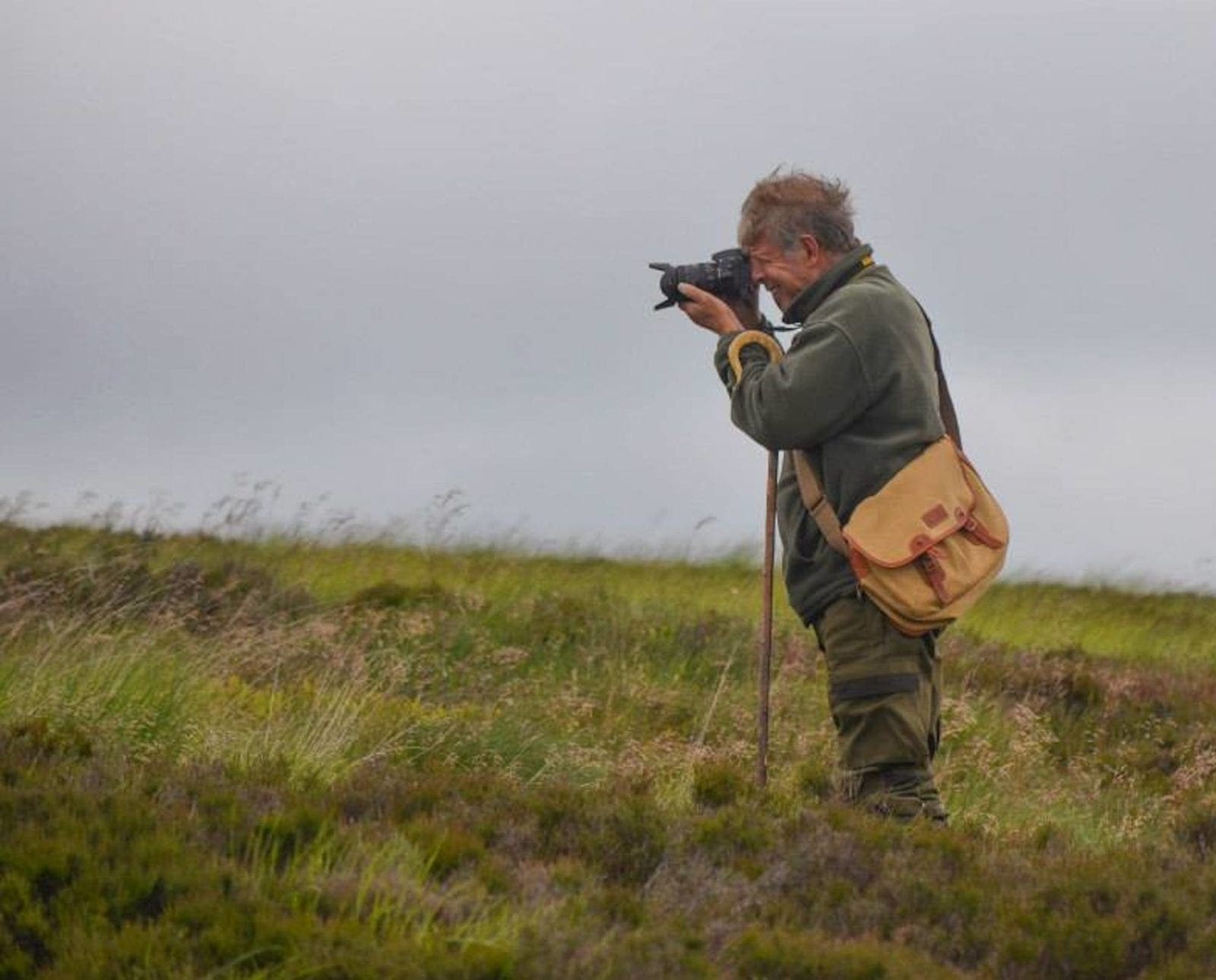Home » Project Upland Listen » Hunting Dog Confidential Podcast » Pointers and Setters on the English Moors with David Hudson: HDC Episode #20
Pointers and Setters on the English Moors with David Hudson: HDC Episode #20

Jennifer Wapenski is the Director of Operations and Managing Partner…
From their home base in Winnipeg, Craig Koshyk and Lisa…
Travel across the Atlantic to discover the world of shooting and field trialing with Pointers and Setters in the United Kingdom
Kicking off our exploration of the methods of hunting with a dog, we start on the grouse moors of England and Scotland. We welcome our first guest to the show, David Hudson, who is an author, photographer, and pointing dog enthusiast with a rich history in the world of Pointers and Setters in the UK.
Before we can get too far, a language lesson is in order. What we call “hunting” in North America is typically referred to as “shooting” in the UK; there, hunting refers to pursuing game with hounds. David describes a typical shooting day afield with Pointers and Setters, which is significantly different from the driven shoots which are more popular in English field sports.
LISTEN on Apple Podcast | Google Play | Spotify | Stitcher
British field trials are designed to mimic a typical day afield with this style of shooting. The key difference is that all of the trialing dogs will be walking along with the group, leashed and absolutely silent. Total silence is required of the dogs who are awaiting their turn to run. Any slight noise will result in immediate disqualification. As a result, British dogs are expected to be very calm and quiet in an otherwise highly stimulating environment.
The field trial scene in the UK is very small as it has only a niche following among enthusiasts. It is not nearly as lucrative as retriever trials, so it means that the participants are primarily doing it for love of the dogs. This small community is tight-knit and is often found cheering each other on as the dogs compete.
We discuss the lack of crossover between British and Irish Pointers and Setters and the rest of continental Europe, which traces back to early rabies quarantine laws. Despite vaccines being prevalent now, the two worlds really haven’t exchanged much in the way of field trial participation or dog breeding stock. Of course, England had to look to other places to rebuild their dog populations after two world wars, but never really continued importing dogs for their breeding programs.
Finally, we talk about the traditions of British shooting culture and the unique language that goes along with it. Tune in to learn the unexpected definitions of “eye wipe” and “feathering,” among others.
As always, we thank you for listening and invite you to submit feedback or questions to us at HDC@northwoodscollective.com . We would love to feature your questions in an upcoming episode! Record a voice memo and email it to us to be featured on the show and to have your question answered.
Share | Comment, review and discuss this episode of the podcast in our Project Upland Community Facebook group.
Enjoy the show and don’t forget to rate, review, subscribe, and share this podcast.
Hunting Dog Confidential is presented by Eukanuba Premium Performance Dog Food and supported by Dakota 283.
Jennifer Wapenski is the Director of Operations and Managing Partner at Project Upland Media Group. She has a lifelong passion for the outdoors, dogs, and wildlife; as an adult, she discovered that upland bird and waterfowl hunting were natural extensions of these interests. What started as initial curiosity soon escalated into a life-changing pursuit of conservation, advocacy, and education. Jennifer serves in a variety of roles such as the Breed Warden for the Deutsch Langhaar—Gruppe Nordamerika breed club and on an advisory committee for the Washington Department of Fish and Wildlife.
From their home base in Winnipeg, Craig Koshyk and Lisa Trottier travel all over hunting everything from snipe, woodcock to grouse, geese and pheasants. In the 1990s they began a quest to research, photograph, and hunt over all of the pointing breeds from continental Europe and published Pointing Dogs, Volume One: The Continentals. The follow-up to the first volume, Pointing Dogs, Volume Two, the British and Irish Breeds, is slated for release in 2020.




Excellent episode and I enjoyed listening to it immensely!
On the part about what happens after the dog goes on point. Craig said in America it’s always the hunter that goes in to flush the bird. I have to say that I have staunch pointing English Setters but I often release them from point and have the dog go in to do the flush. And I know I’m not the only one that handles my pointing dogs this way. There are advantages and disadvantages of either method, of course. But I find it of great advantage because I’m often hunting very thick cover, and it’s the nature of birds to hide in the thickest of spots. So to have the dog go into that thick cover is much better because they will more effectively find the bird and it allows me to stay out where I’ll much more likely have a safer, clearer, and more open shot. It also remedies the issue if it’s a false point, then the dog will usually just move up and re-point.